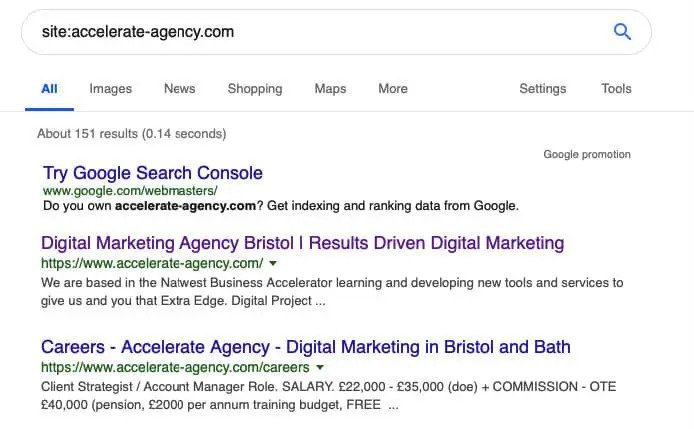7 Common Mistakes Revealed by a Content Audit
Content is the bread and butter of any successful online business. When it’s done right, it can be the driving force of a business’ success. Get it wrong, and at best you risk maximising the full potential of your business. Worst case scenario? You’re going to lose money and customers.
To help you avoid making those issues, here are seven common mistakes revealed by website audit to help you recognise the signs of substandard content. By understanding the common issues that other website managers make, you can avoid making them yourself.

1. Money Talks – No Mention of Pricing
This is a common problem for businesses, mostly B2B companies. When a business’ pricing depends on a number of factors, it is understandable that they might not include figures on their website. This can be a fatal mistake.
The fact of the matter is, people need and want to know how much your service or product will cost from the start and often that is what they are looking for first, over quality or reputation of your brand or product. Adopting a “To Be Confirmed” (TBC) policy for pricing is off-putting for would-be customers who want to know where they stand before making the effort to contact you.
Book a Consultation
Having your prices online is also beneficial for your business. When your customer knows the price up-front, you can be sure that any contact you do have from them is more likely to be fruitful as there will be no hidden surprises for the customer to frighten them off later, saving you time and money.
When a business is reluctant to be open about pricing from the off, this can generate suspicion in the mind of a potential client. What are you hiding? Are you going to rip them off? Having a clear-cut cost policy on your site creates an element of trust between you and your customer and makes for an easier, more pleasant transaction.
See here for more information on why price transparency is key to good content.

2. Seeing Double– Page Duplication From Migration to HTTPS
Having duplicate content on your site can be damaging for your Search Engine Results Pages (SERPs) rankings since search engines cannot decipher which of the page versions is the most relevant to a query. Some sites have their entire website duplicated, others just a few pages where the necessary redirects were missed.
To avoid making this mistake you must ensure that you have the correct 301 redirects linking your HTTP version of your site to the HTTPS version to avoid duplication. Run crawls periodically to flag-up any issues, then rectify them as soon as you see them. Have a look at this guide from Hashed Out for a step-by-step guide on how to avoid page duplication.

3. Jungle of Jargon – Too Much Technical Language
For some businesses, a common pitfall is to create overly-technical content. Such content is often of a high standard, but you need to be a subject-savvy reader, well-versed in the relevant field or industry and its jargon, to understand what any of it means.
For the lay would-be customer, the Average-Joe who doesn’t understand the jargon your content will come across confusing. The danger is you will lose their interest and their custom. The rule is simple – Don’t over-complicate your content.
This goes for generally over-embellished language as well as industry-specific technical words. You can find a list her of commonly-used jargon that’s probably clogging up your content.
One of the biggest mistakes we see time and again here at Accelerate is companies forgetting about the local market. The simple truth is that local search terms are of immense value, and ranking for these terms will help your company grow.
A standard way to improve local search engine rankings is the creation of business listing citations to branch offices, or your office or store. Just implementing this simple strategy can result in a significant jump in local SERP rankings.

5. Where Next? – Unclear Page Goals and Poor Accessibility
The format of a site is just as crucial as content. A poorly-organised site with no clear structure or navigation is a headache for your site visitors. A slow loading site deters visitors, potentially costing your company revenue. The same is true for a site with no clear structure or poor navigation.
It’s not just the potential customer who will struggle to decipher a poorly-structured site. Search engines won’t be able to rank the importance of your site’s pages if they aren’t properly organised. Be sure to have a clear navigation screen where the next steps are obvious to the average user.
In addition to this, utilise internal links wisely and think about where your visitor would logically want to go to next from each of your pages. Be sure to have links back to your homepage or welcome page from your blog to avoid your user being trapped there.

6. Not Retaining Customers Details
It can be easy to get caught up in what is objectively the most important part of a buyer transaction – The Purchase. However, the other stages of the buyer journey (Awareness, Consideration and Retention) are just as important. Your content should reflect this.
Take the Retention stage, for example. If your customer has purchased from you once, they are highly likely to purchase again. Your content should maximise the likelihood of this repeat custom by retaining the customer’s interest in your brand as much as possible.
By collecting and retaining your customer’s details on your system you reduce the obstacles to future purchases. You can also use these customer insights to promote new relevant products, offers and other content – A valuable resource, but one that is often overlooked or underplayed.

7. Opinions Matter – Poor Use of Testimonials
Though third-party, independent review sites like Tripadvisor and Yelp, and supposedly Trustpilot are held in higher esteem, client or customer testimonials can still be useful. Moreover, these testimonials are a persuasive tool when used correctly.
More often than not businesses dedicate an entire page of their site to testimonials, with no accompanying explanation or context. Maximise the impact of your testimonials using them alongside your other copy. Avoid using them without context or purpose like in the example below.

It’s common-sense really. If a customer raves about how quickly their product arrived, put the testimonial on the Shipping and Delivery page. Likewise, if a customer was really happy with the product and found it good value for money compared to competitors, put it on the Pricing page.
Got a not so nice review from a disgruntled client or customer? No fear – Check out our guide here on how best to deal with bad reviews.
Bottom Line? Get Audited
Why risk losing business and customers by making these mistakes? Have Accelerate conduct a website audit on your behalf. A fool-proof way to flag up your website’s failings and maximise your site’s potential.

